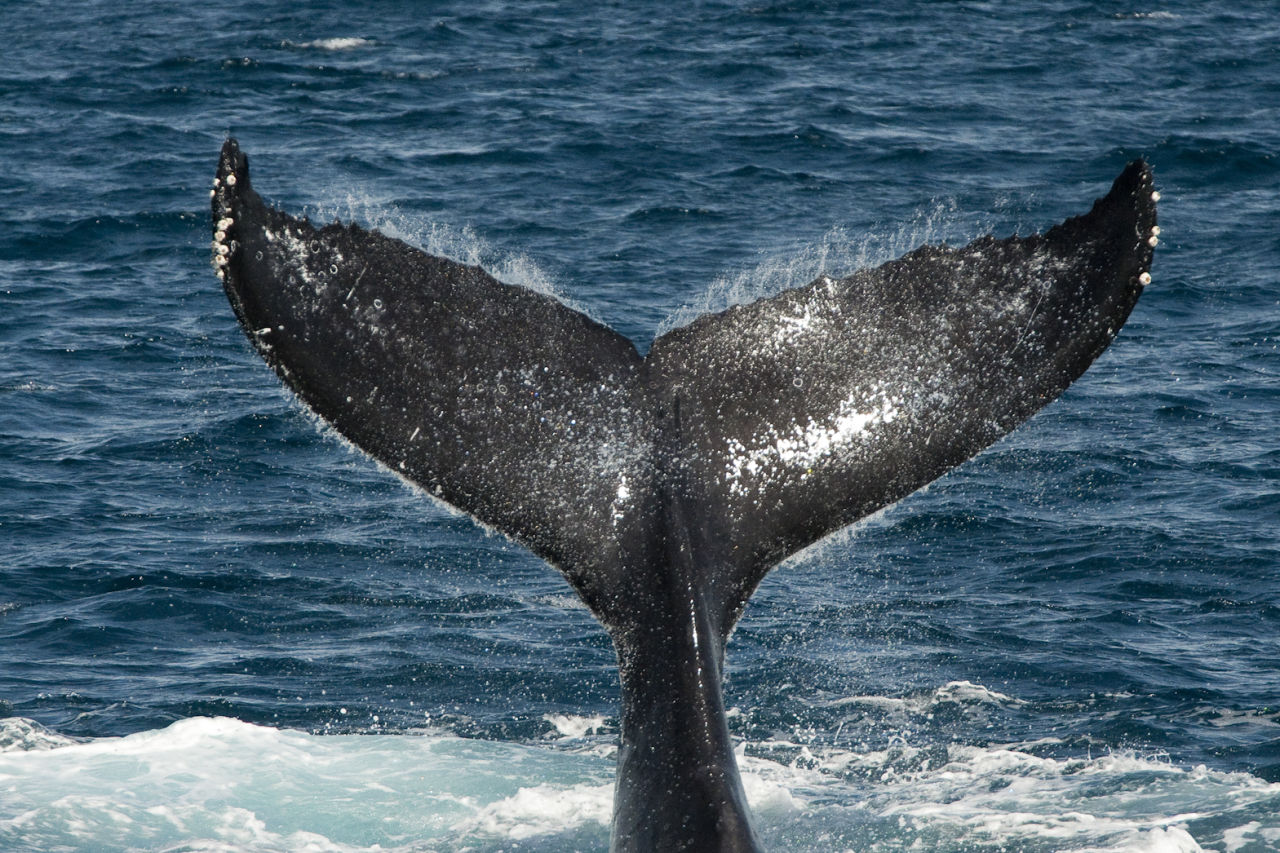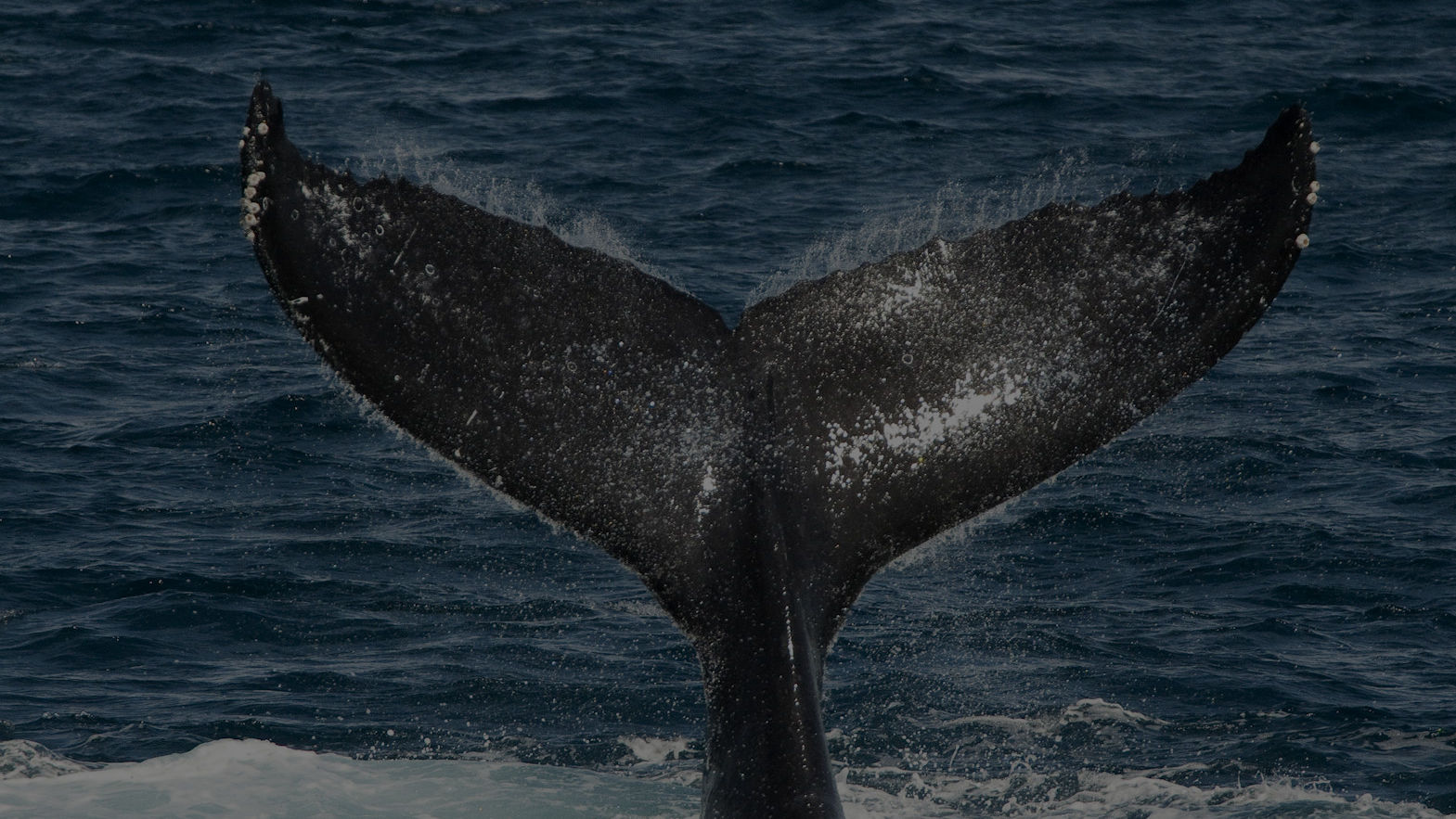Humpback Whale
These playful leviathans are the musicians of the sea.

Kingdom
Animalia
Phylum
Chordata
Class
Mammalia
Order
Even-toed ungulate
Family
Balaenopteridae
Genus
Megaptera
#Description
Humpback whales are one of the largest species of baleen whale, averaging a length of one to 16 metres and weighing 25 to 30 metric tons. Humpbacks are known for their complex breaching behaviours that make them popular with whale watchers.
#Habitat and diet
Humpback whales can be found worldwide. These playful creatures live off their blubber in the colder months, only hunting in summer. They are carnivorous, eating mostly krill, small crustaceans and schooling fish. They have several hunting techniques: direct attack, stunning with a slap to the water, and creating a ‘bubble net’ around their prey.

#Intelligence
Humpback whales are intelligent, with brains weighing up to a ton. They can travel over 25,000km and remember locations, can organise hunting group techniques, and have been known to play with and protect other species such as dolphins, seals, smaller whales, and humans. There is some scientific evidence to suggest that these whales may be able to recognise and remember certain humans and other species.

Humpbacks 'talk' by slapping their tails on the water's surface.
#Humpback whale facts
1.
Humpback calves interact with their mothers by brushing fins and whispering.
2.
Like most whale species, female humpbacks are larger than males.
3.
Before 1996, the Humpback whale population fell by 90%, after being hunted so heavily.
4.
Humpbacks get their name from a hump under their dorsal fin, which is visible when they arch their backs to dive.
#Behaviour and Reproduction
Humpback whales have elaborate courtship rituals, which take place in the winter. Males form competing groups around females they want to mate with. They compete by song, breaching, charging, sparring and slapping their tail and fins. If males are unsuccessful, they leave the group. Female humpback whales breed every two to three years and have more than one male partner over their lifetimes.
#Threats
Due to bans on whaling, humpback whales have increased in number and are not considered endangered. However, individual humpbacks are still threatened by ship collisions, fishing gear and noise pollution.
#IUCN Red List status
The humpback is listed as least concerned (population trend increasing) on the International Union for Conservation of Nature’s Red List of Threatened Species.
LC
Least concern ↑

